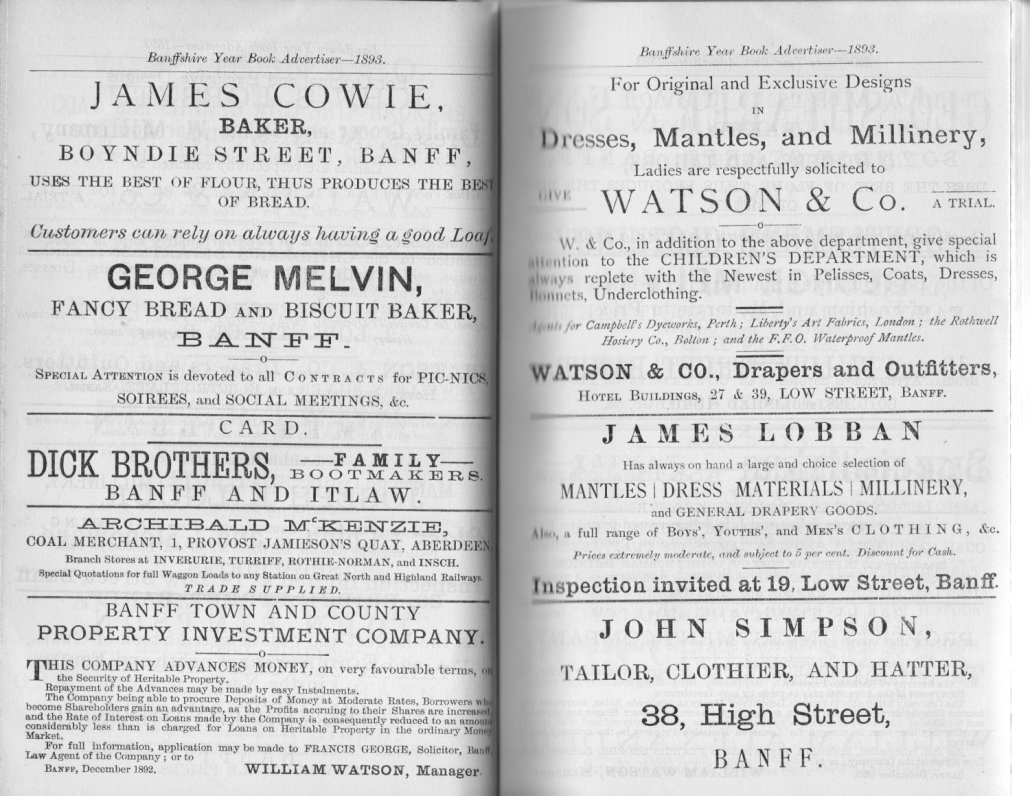
There are six pages of small print about Banff in the Banffshire Year Book of 1893, starting with the unproven fact that it was made a burgh by Malcolm Canmore, who died in 1093. It lists local bequests: “Misses Russell’s bounty provides £12 a year to each of 20 old women belonging to the town”. There was then a Town Council, with a provost, three bailies, a treasurer, a dean of guild, and four councillors, a town clerk and his deputy and a chamberlain. There was a burgh court, and harbour trustees, a school board, and an educational trust. There were two private schools for girls. There were ten solicitors, and five banks. There were six ministers, and they add the officials of the Bible Society, the Young Men’s Christian Association, and the Shipwrecked Mariners’ Society.
How did people spend their time? There was a Literary Society, with a library of 6000 books, a Mutual Improvement Society, there were Science and Art Classes, a choral society, a draughts club, and an amateur dramatic society. If you were energetic, there was a lawn tennis club, a skating and curling club, two cricket clubs, a football club, a fox terrier coursing club, a golf club, and a gun club. There were 104 men in the Rifle Volunteers, and another 73 in the Volunteer Artillery.
There is about half a page of small print on five different categories of freemasons, listing all their officials, the scribe, the inner guard, the sojourner. There were also the United Oddfellows. If you were kindhearted you might help with the dispensary and soup kitchen.
There was a Danish Vice-consul, and they list 25 ships based at Banff. The biggest was the 303-ton Vigilant, the smallest the 16-ton Arab Maid. There is a very complicated list of the last posting time to and from every local hamlet: “Itlaw runner reaches end of walk at 9.35, leaves 12.10 and reaches Banff 2.20pm”.
There is a complete list of the resident Parliamentary voters, all male, of course, all 442 of them, with their trades. By then the franchise was wide enough to include labourers and postboys, several fishermen with ‘tee-names’, and a linen hawker. In the six pages there are women teachers mentioned, and the accompanist to the choral society, but otherwise this seemed a male world.



